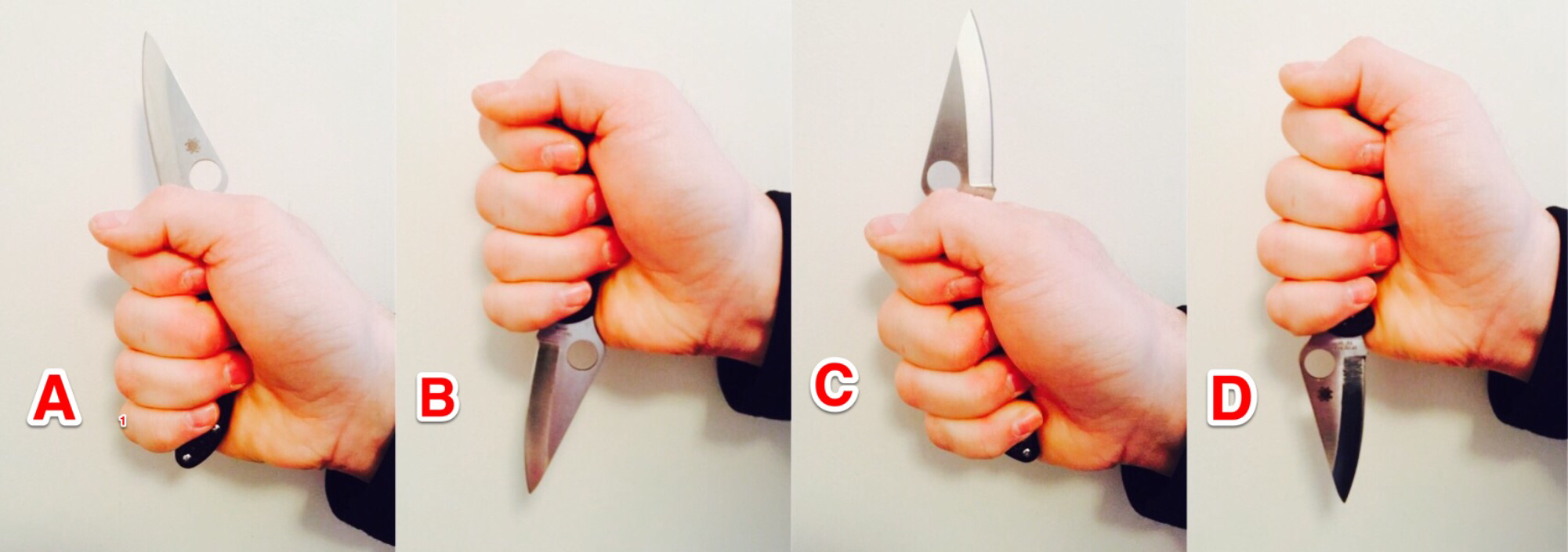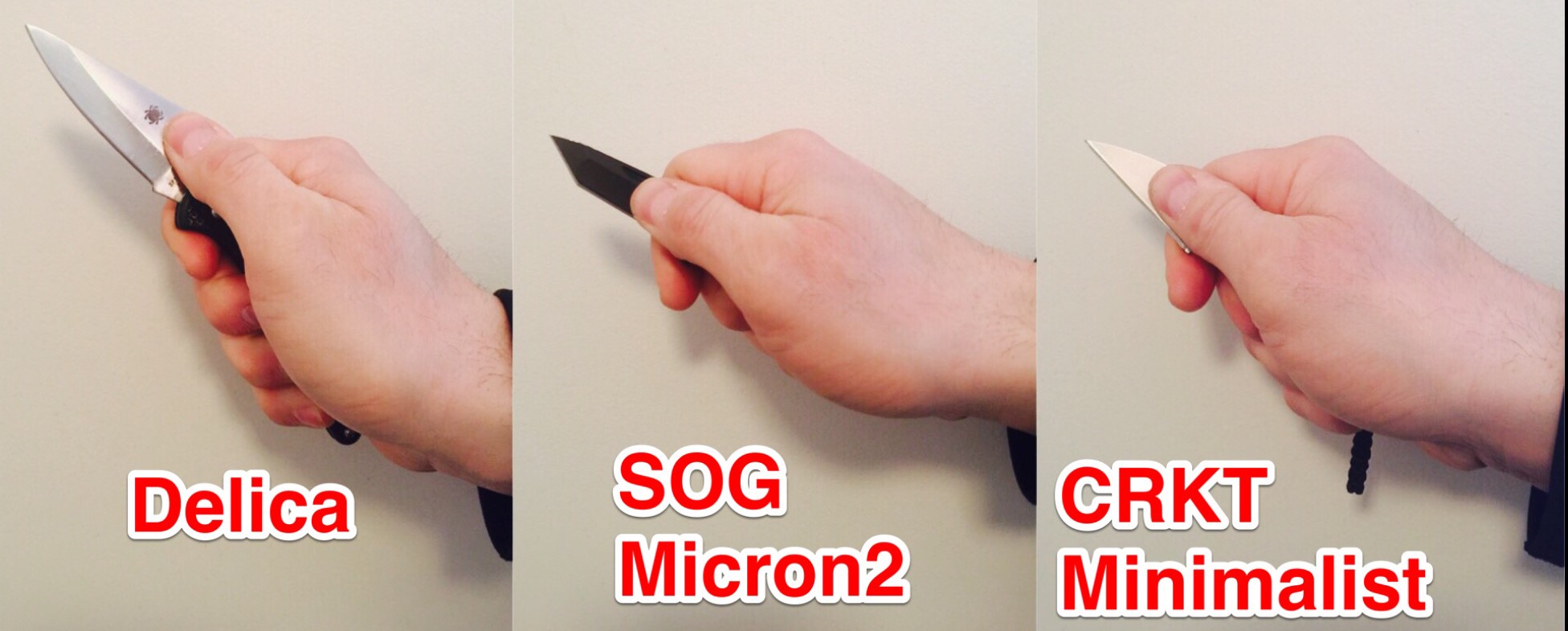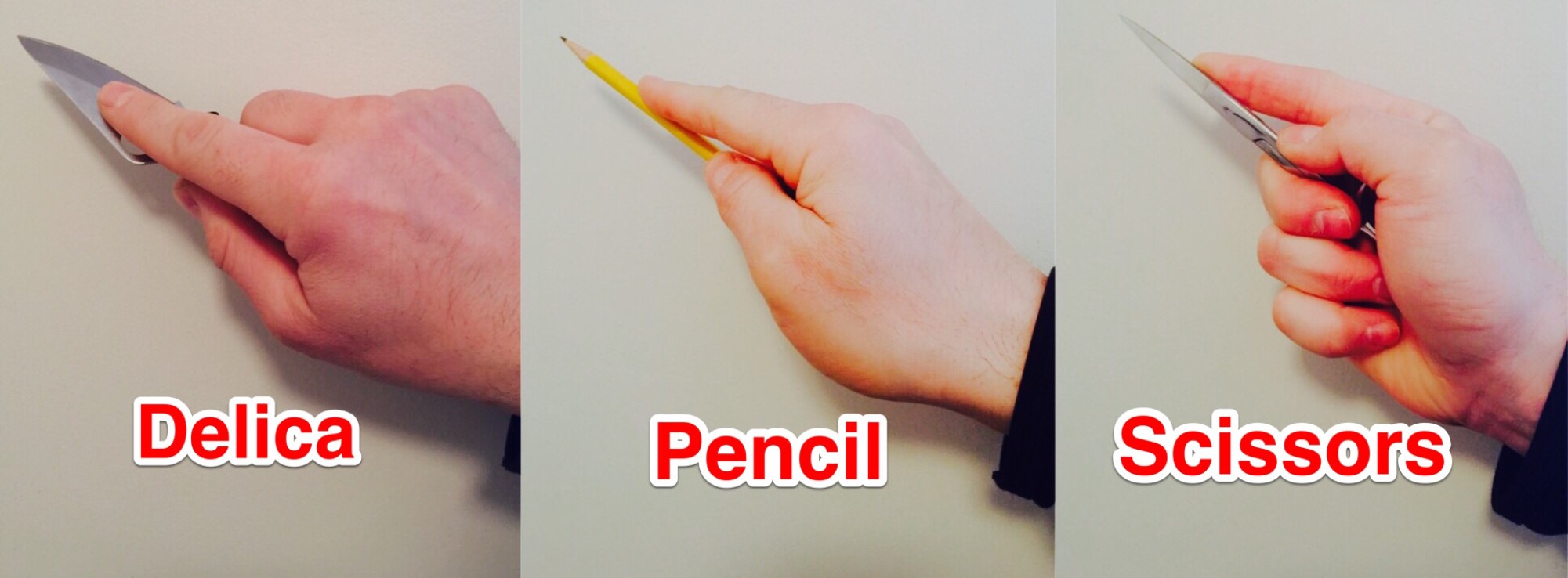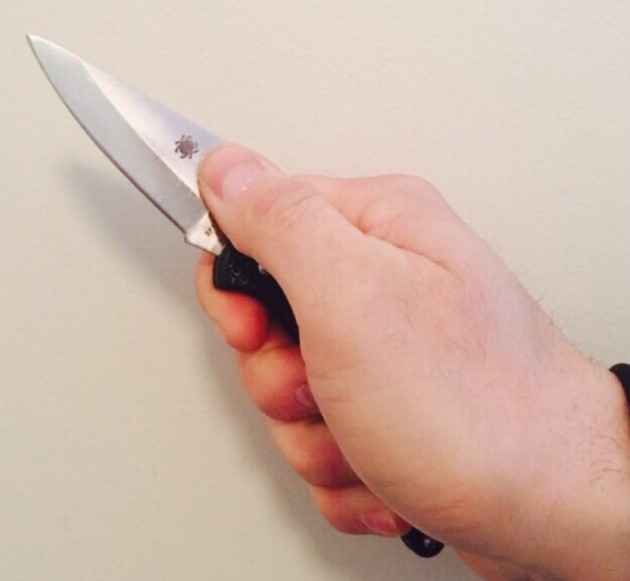Understanding and utilizing a final fighting grip for a knife or knife-like object in a personal protection situation may be dictated by the urgency of the situation or the advanced preparation of the knife carrier.
Rapidly picking up a dropped knife that an assailant tried to stab you with during a dynamic situation leaves little time to choose which grip you prefer; you either grab it or you don’t. However, an individual who carries a knife daily possesses the ability, via pocket clips, sheathing options and carry locations, to set up knife access specific to a preferred grip for any application, such as scoring a piece of drywall or rapidly and effectively defending life.
What grip you choose may be influenced by a number of factors. In terms of defensive knife utilization, the style or martial system you prefer to follow or train in may determine what grip is best or most preferred. Knife size and design may determine the most comfortable grip or limit how you grip that particular knife. Maybe you don’t have a knife but a knife-like object and want to utilize it like a knife: Will the skills you’ve spent time training apply effectively to something you hastily pick up in your environment? Finally, the method in which you will be utilizing the knife may determine which grip is best. Will you primarily be utilizing the point, the edge, or both?
While knowing more than two basic grips is frowned upon in some “knife training” circles and communities, it is not uncommon for some styles or systems to teach more than 10 different grips for various applications of the knife, tool, or object being utilized like a knife. For the purposes of this article, I will leave the application method up to the reader and focus on outlining a few conventional and unconventional small knife-gripping methods for consideration (small knives because two- to four-inch knives are legal to carry in most jurisdictions). Knowing a variety of grips allows the user to implement the knife in the safest, most stable, and effective way. Some are common grips, some you may know by a different name, some you may have seen, and some you will question the efficacy of. I have found uses for all of them.
Conventional Grips
If time and circumstances do not allow assumption of a specialized gripping method (i.e., grabbing a knife rapidly off the ground or a countertop in an effort to stop an attack), one of these four grips may result:
Forward and Reverse Grip Variations

(A) Forward Grip Edge Out (FGEO)
Also referred to as the hammer or caveman grip, the FGEO is probably the most commonly utilized of all grips. The fingers and thumb totally wrap around the handle, providing a very secure hold on the knife, with the edge oriented away from the user. When the wrist is locked, this grip facilitates excellent reach, powerful slashing and vertical downward hacking movements. Powerful thrusts can be executed from this grip, but tip orientation and accuracy can be issues due to the upward angle the blade assumes when the wrist is locked. Turning the wrist so the knuckles face skyward and the palm down when thrusting helps reduce this.
(B) Reverse Grip Edge Out (RGEO)
Also referred to as the Ice-Pick Grip, the RGEO is often the most comfortable way to hold a knife due to common knife handle designs. With the edge oriented away from the user and the tip down, vertical upward and horizontal slashes can be executed, though vertical downward slashes may not be as comfortable for some users. This grip allows extremely powerful downward thrusts similar to hammer-fist type strikes and provides the ability to hook and pull. With the wrist locked in this grip, extended reach may be limited without integrating physical movement such as leaning and hip/torso rotation to better facilitate arm and knife extension.
(C) Forward Grip Edge In (FGEI)
Possibly categorized as an unconventional grip by some, the FGEI is excellent for cutting upward, thrusting, hooking, and pulling inward type movements, especially at close range. But this grip makes slashing in any other direction problematic and, with the edge facing inward, the possibility exists that it could be pushed or hit back into the user.
(D) Reverse Grip Edge In (RGEI)
Simulating the inward hooked claws and talons of predators, the RGEI is a strong ripping and pulling grip. Providing the same powerful downward thrusts as the RGEO, the inward edge orientation cuts as the user pulls the blade out and back. Due to the handle designs of most small knives, the guard or quillon’s placement will bite into the hand of the user when utilizing this grip. The inward edge orientation also means the blade is coming back at the user, which can pose a safety issue depending on the size of the knife and the experience and training of the user.
Unconventional Grips
When time and circumstances do allow assumption of a specialized or stylized gripping method such as these:

Saber Grip and Filipino Grip
(A) Saber Grip
The Saber Grip is a forward grip where the thumb is placed on the spine of the knife handle at the guard or where the knife protrudes from the handle. This grip allows the user to apply force to the back of the blade for strong cutting and reach, but the noticeable gap between the thumb and fingers is weak, especially if lateral force is applied toward the gap.
(B) Filipino Grip
The Filipino Grip is a forward grip similar to the Saber Grip, but the thumb is in a more forward position on the spine of the blade. This facilitates deep and powerful cutting and slashing. The thumb along the back of the blade lets the user guide the edge toward targets with great accuracy. But like the Saber Grip, the user’s grip is weakened due to the gap created between the thumb and forefinger. Another consideration is having to pick a knife up in a hurry or under stress and possibly cutting the thumb on the edge of the blade or when utilizing any reverse-edge knife, as in photo C (above).

Modified Saber/Pinch Grip
The Modified Saber, sometimes called the Foil or Pinch Grip, places the thumb on the side of the blade, orienting the blade horizontally in the hand, with the edge traditionally facing left. A very secure grip with small knives, especially ones with short handles, the pinching force between the thumb and index finger isolates any movement of the blade when applying force to the edge. Inward slashing and especially thrusting are facilitated with this grip, though backhand slashing is limited. Perhaps this grip’s strongest attribute is the ability it offers the user to pick up and strongly thrust any small knife or pointed object.

Palm / Finger Assist
The Palm and Finger Assist Grip places the pommel or butt of the handle into the cup of the palm of the hand and the index finger along the spine or side of the blade. This unconventional grip provides the user with excellent accuracy when thrusting, allowing him to literally point the index finger at the target. When the finger is placed along the spine of the blade, the finger can hide a small blade and assist in guiding the edge. Similar to the Reverse Grip Edge In, this grip simulates the claws of a predatory animal, making the blade or pointed object an extension of the hand and finger.

Punch Grip
The Punch Grip positions the knife between the middle and ring finger with the pommel or butt of the knife braced against the cup of the palm when making a fist. The Punch Grip works well with small knives and pointed knife-like objects (such as the scissors above) and allows powerful thrusting and punching. Backhand slashing is severely limited in this grip without extreme wrist and arm articulation. This grip is also weak along the bottom between the fingers. If force is applied to the top of the blade or object, it will push it down and out from between the fingers.
Conclusions
A saying often heard when discussing knife training is that if a man holds a knife a certain way, he is dangerous and certainly “trained.” Frankly, any man with a sharp pointed object is dangerous if he possesses aggression and the intent to do harm. In times past, there may have been some merit to this saying in regard to duels or ritualized combat wherein one man, possibly trained, could challenge another, possibly untrained. Today, with the abundance of information, knife styles, martial systems, and instructors available both in person and via digital reference, the multiple and varied knife skills and arts present a myriad of possible gripping methods, strategies, tactics and applications.
Find a few conventional knife grips that work for you, with your knives, and maybe a couple of unconventional grips that work with common knife-like objects in your environment. Study them, practice them, and make them part of your personal protection profile, so that you will be better prepared.

[…] aspect of which knife you select. The knife has to be comfortable when you hold it – in a forward grip and a reverse grip. Here are some things to look […]
As a Filipino American who has trained in weapons based Filipino Martial Arts for most of the last 20 years, I’ve never heard the term “Filipino grip” before. Curious as to the source of that term as you used it in the article. Thank you.
Intent/ circumstances may also dictate grip. Slashing in winter (heavy clothes) is a waste of effort, time & opportunity. Stab!
Seems to overly complicate what should be a straightforward issue
Good tips. I've been carrying a knife since I learned to shoot at 7-8yrs old. They have many uses. I used mine mostly for work or wiggling, had a couple hrs martial arts and in high school, preped for self defense. Never needed it in a scuffle. Been close but was able to avoid ever pulling it out for self defense. Got my wife a spderco but she won't let me teach her, lol. Maybe this arrival will give her a thought. Thanks
Nice writeup on the different possible grips. You should have emphasize the conventional forward & reverse being utilized the most for shanks that you see used in jails & streets among gangs.